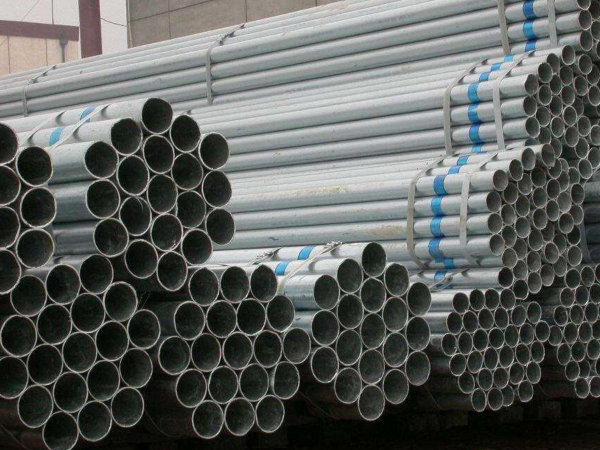The
galvanized seamless steel pipe is to make the molten metal react with the iron matrix to produce an alloy layer, so that the matrix and the coating are combined. Hot-dip galvanizing is to first pickle the steel pipe. In order to remove the iron oxide on the surface of the steel pipe, after the pickling, it is cleaned in a tank with ammonium chloride or zinc chloride aqueous solution or a mixed aqueous solution of ammonium chloride and zinc chloride, and then sent to In the hot dip plating tank. Hot-dip galvanizing has the advantages of uniform coating, strong adhesion and long service life.

The difference between hot and cold galvanized seamless pipes:
1. Differences in process
Hot-dip galvanizing is to remove the oil, pickling, dipping, and drying the workpiece, and then immerse it in the molten zinc solution for a certain period of time, and then put it out.
Cold galvanizing, also known as electro-galvanizing, is to use electrolytic equipment to deoil and pickle the workpiece into a solution of zinc salt, and connect the negative electrode of the electrolytic equipment; place a zinc plate on the opposite side of the workpiece to connect to the electrolytic equipment. Positive, turn on the power, and use the direction of the current to move from the positive to the negative, which will deposit a layer of zinc on the workpiece.
2. The difference between galvanized products
The surface of hot-dip galvanizing is not as delicate and bright as cold galvanizing, but in terms of zinc layer thickness, hot-dip galvanizing is dozens of times that of cold galvanizing. The anti-corrosion performance is also dozens of times that of electro-galvanized.
The hot-dip galvanized pipe is to make the molten metal react with the iron matrix to produce an alloy layer, so that the matrix and the coating are combined. Hot-dip galvanizing is to pickle the steel pipe first. In order to remove iron oxide on the surface of the steel pipe, after pickling, it is cleaned in the tank of ammonium chloride or zinc chloride aqueous solution or mixed aqueous solution of ammonium chloride and zinc chloride, and then sent to the Hot dip galvanizing bath. Hot dip galvanizing has the advantages of uniform coating, strong adhesion and long service life.
Cold galvanizing is electro-galvanizing. The amount of galvanizing is very small, only 10-50g/m2. Its corrosion resistance is much different than that of hot-dip galvanized pipes. In order to ensure the quality, most regular galvanized pipe manufacturers do not use electro-galvanized (cold plating). Only those small enterprises with outdated equipment use electrogalvanizing, and of course their prices are relatively cheap. The Ministry of Construction has officially issued an order to eliminate cold galvanized pipes with outdated technology, and not to use cold galvanized pipes for water and gas pipes.
3. The difference in appearance
The appearance of electro-galvanizing is relatively smooth and bright, and the electroplating layer using the color passivation process is also mainly yellow-green in color, showing colorful. The electroplating layer using the white passivation process is bluish white or white and green, and the coating layer of the white passivation process is slightly colorful at a certain angle with the sunlight. In the corners and edges of complex workpieces, it is easy to produce "electric burning" and become gray, and the zinc layer in this part is thick. It is easy to form a current dead angle in the inner corner, resulting in an undercurrent dark area, and the zinc layer in this area is relatively thin. The workpiece as a whole has no zinc nodules, agglomeration and other phenomena.
The appearance of hot-dip galvanizing is slightly rougher than that of electro-galvanizing, and it is silver-white. The appearance is prone to process water lines and a little drip, especially at one end of the workpiece.













 Eastern Steel Manufacturing Co.,Ltd not only improve product production and sales services, but also provide additional value-added services. As long as you need, we can complete your specific needs together.
Eastern Steel Manufacturing Co.,Ltd not only improve product production and sales services, but also provide additional value-added services. As long as you need, we can complete your specific needs together.










